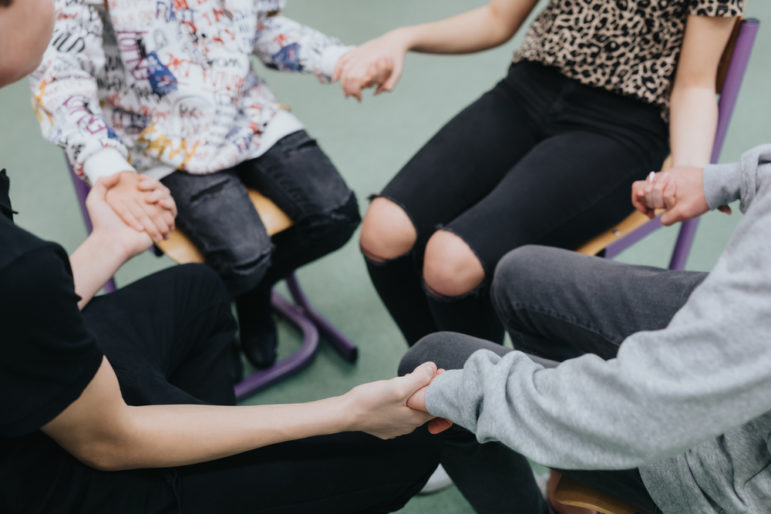
Photographee.eu/Shutterstock
.
In the transition from adolescence to adulthood, even the best-prepared kids can be expected to stumble.
That period is even more challenging for foster youth who don’t have a stable family, likely fell behind academically due to frequent school changes and might struggle with mental health challenges due to past traumas.
Young adults in foster care — and especially those who leave the system without a permanent family — are more likely to experience homelessness, unemployment and incarceration. Nearly one-third of California foster youth ages 17 to 21 had stayed in a homeless shelter or on the street for at least one night, a recent Chapin Hall study found. Yet little is known about the effectiveness of programs that aim to address homelessness among this vulnerable group.
An Alameda County, Calif., program called Youth Transitions Partnership has shown promise for improving several factors that might contribute to foster youths’ ability to find and maintain housing, including having a job, financial literacy and strong social ties. An early evaluation by Chapin Hall at the University of Chicago released today found that youth benefitted from the program’s pairing of intensive coaching and regular group therapy.
Alameda County designed Youth Transitions Partnership under a multiphase grant from the Children’s Bureau Youth At-Risk of Homelessness program, which seeks to test approaches to preventing homelessness among current and former foster youth and young adults. The initial four-year grant was for $2.68 million. The California program, started in 2016, matches foster youth ages 14 to 20 with a coach who meets with them weekly to support youths’ goals around schooling, work, housing and relationships.
The program also incorporates dialectical behavior therapy (DBT), a form of cognitive-behavioral therapy that has been shown to reduce self-harm, substance use, depression and psychiatric hospitalization. Youth participate in weekly DBT skills groups that teach mindfulness skills and help them learn how to tolerate distress, build effective relationships and manage their emotions. Youth can call their coaches, who work with a maximum of 13 young people, around the clock.
“What I really love about the program is the pairing of this more clinical component of the DBT with the relationship-building between the coach and youth,” said Laura Packard Tucker, a Chapin Hall researcher who helped lead the study. That pairing “is what makes Youth Transitions Partnership special,” she said.
DBT skills helped, participants said
The Chapin Hall study included 98 youth active in the program from March 2016 through April 2019. The 20 who completed an established DBT checklist two or more times showed a significant increase in their use of DBT coping skills, but no reduction in dysfunctional strategies.
Coaches also rated youths’ status — from “in crisis” to “thriving” — along 10 domains, including education, employment, housing stability and physical and mental health. The 45 youth for whom coaches completed baseline and follow-up assessments had significant improvements in the areas of employment, financial literacy and permanent social connections. The study authors speculate that youth had more opportunity to improve in these three areas because they scored particularly low on them at baseline.
These findings are preliminary, Packard Tucker emphasized. “We can’t really say anything about the true effect of the program,” she said, “because we don’t have … a control group to look at how the youth in the program compare to youth out of the program.”
Youths’ own statements about the program showed that many valued the trusting relationships they had built with their coaches.
“I don’t have a lot of very strong adults in my life that aren’t paid to work for me,” one young person told the researchers, “and it felt like the connection I had with my coach is — like, they actually give a [expletive], and that’s something that I’m not very used to having.”
They also spoke of using the skills they had learned in the DBT groups to calm themselves and diffuse conflicts. Packard Tucker recalls hearing from participants who had found themselves on the verge of getting into a fight. “But they would use specific skills, like thinking about the progress they’d made … to help them motivate to de-escalate the situation,” she said.
In addition to such short-term outcomes, the Chapin Hall team focused on evaluating how well Youth Transitions Partnership followed the model it had designed and made course corrections along the way.
They discovered, for example, that the complex enrollment process had contributed to fewer youth participating than expected. As a result, the program hired a full-time enrollment coordinator to walk youth through the process.
Of 469 eligible youth, as determined by risk factors such as entering foster care at age 14 or older or taking a psychiatric medication, some were disqualified due to language barriers or severe developmental delays, Packard Tucker said. Others were hard to reach or simply not interested. But among those who participated in an introductory meeting where they met their potential coach, 95% went on to enroll in the program.
To date, very few programs that seek to prevent youth homelessness have been evaluated rigorously, said Amy Dworsky, the study’s co-author and Chapin Hall research fellow. A similar intensive coaching program for youth exiting foster care called Youth Villages LifeSet is one of the few that has demonstrated improvements in housing stability, she said.
The Alameda County program is waiting to learn whether it will receive another Children’s Bureau grant to take a closer look at outcomes.
In the meantime, Dworsky said, Youth Transitions Partnership seems to help young people in some key areas that might affect their chances of becoming homeless.
“At least,” she said,” it does show that it is possible to move the needle in the right direction.”
This story has been updated.
























